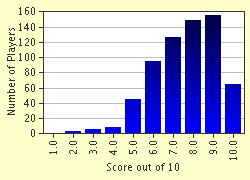Quiz Answer Key and Fun Facts
1. Before we begin with a patient, let's settle a definition. Phlebotomists mainly draw blood through venipuncture. Venipuncture means puncturing a vein with what object?
2. A patient comes in, and I seat her in a nice comfortable chair. As a phlebotomist, what is the very first thing I must do?
3. I look at the tests ordered for my patient. I see that she needs multiple containers of blood drawn. Do I need to fill these containers in any particular order?
4. I know who my patient is, and I know which containers I am going to draw. Next, I'm going to look for my vein of choice: the median cubital vein. Where am I going to look?
5. I apply a tourniquet to my patient's upper arm and begin to feel for a vein with my finger. What am I feeling for?
6. To prevent infection, I need to clean and disinfect the skin before inserting the needle. Which of the following chemicals is the *least* likely disinfectant to be used for routine venipuncture?
7. I am ready to start, so I slip my needle into the vein and fill the tubes. As I pull the needle back out, I place a piece of gauze over the wound and press down. What am I preventing during this step?
8. After taking blood from my patient she suddenly begins to look pale and complains of dizziness. Her eyes are beginning to roll back into her head. What do I do?
9. My patient recovers from her faint and heads out the door. She is very unlikely to contract an infection from the procedure because I have followed the principles of infection control. Which of the following is NOT an infection control procedure?
10. As a phlebotomist, I follow standard precautions to protect myself from infection. Which of the following will I NEVER do?
Source: Author
duchessjlh
This quiz was reviewed by FunTrivia editor
Exit10 before going online.
Any errors found in FunTrivia content are routinely corrected through our feedback system.

